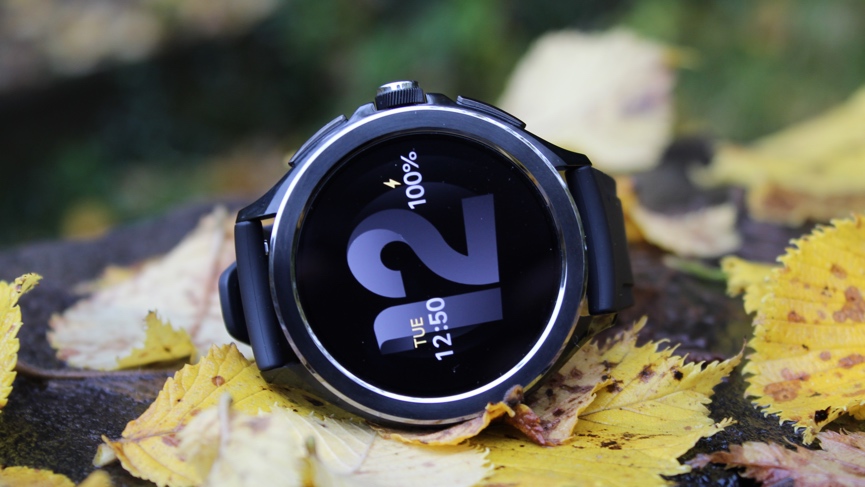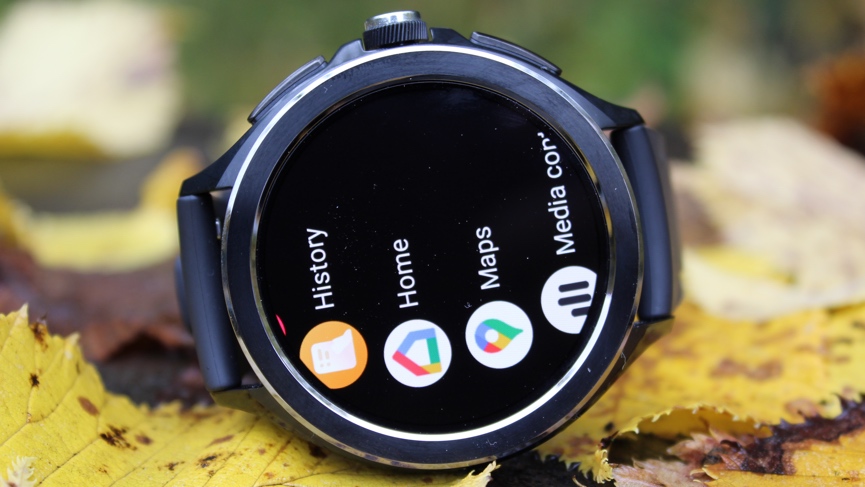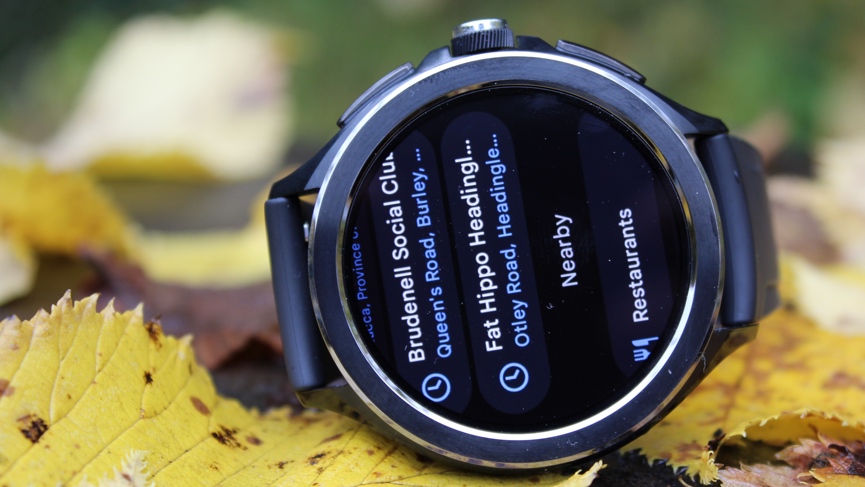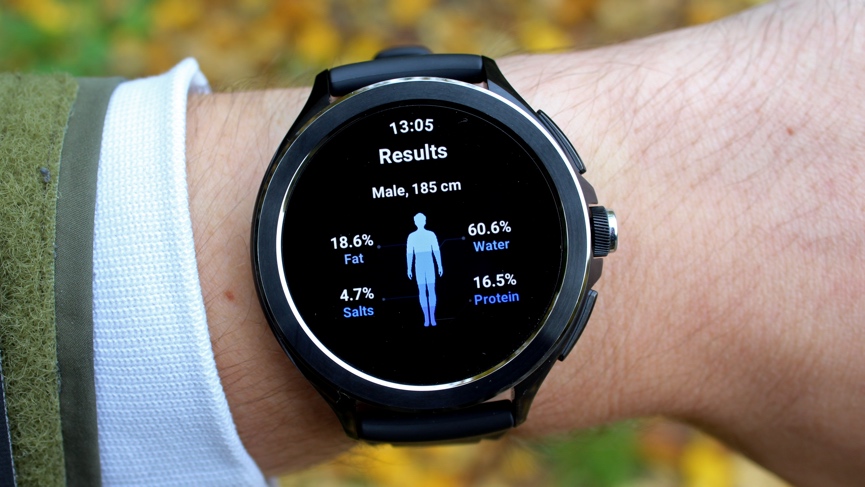
- Build quality is solid
- Multi-day battery life
- Third-party apps - finally!
- Chunky and heavy for exercise
- Quite a buggy Wear OS skin
- Tracking accuracy is woeful
If there's a smartwatch that embodies the Wear OS renaissance over the last couple of years, it’s the Xiaomi Watch 2 Pro.
While Google’s software was once cast aside by vendors in favor of their proprietary skins, Xiaomi has now followed Samsung’s lead and offered its own take on the revived platform. It's even backed up this Pro model with a newer, cheaper Xiaomi Watch 2.
And, at least on paper, this isn't a tentative first effort. The Watch 2 Pro boasts dual-frequency GNSS typically found in high-priced sports watches, the promise of 65-hour battery life, and even seldom-seen health tracking features like body composition analysis.
All this, of course, with the might of Google’s services now behind it, too.
Xiaomi’s first Wear OS watch has it all. After our in-depth real-world testing, though, it’s also a reminder that the truly top smartwatches aren’t made on specs alone.
Price and competition
Wareable
With a very competitive price tag of £230 (around $280) for the non-LTE edition of the Watch 2 Pro, and £280 (around $340) for the cellular model, Xiaomi’s debut Wear OS watch immediately becomes even more interesting.
Given that the comparable 44mm Galaxy Watch 6 is set at £319 / $329, and the TicWatch Pro 5 (£329 / $329) and the Google Pixel Watch 2 (£349 / $349) are another step on, the Watch 2 Pro is comfortably the cheapest way to get the latest Wear OS software on your wrist. Remember, too, that a device like the TicWatch Pro 5 doesn’t yet come with the option of LTE.
As we mentioned up top, Xiaomi also has the £160 / $190 Watch 2, which boasts the majority of the features we've tested below in a lighter, aluminum design.
Elsewhere, there is the Huawei Watch GT 4 to consider - also coming in at £229/$229 - but this comes without all the added features and apps that Wear OS provides.
We should also note that the Watch 2 Pro isn't officially sold in the US, though it is still possible to pick it up through third-party retailers.
Design and screen
Wareable
While Google and Apple have delivered quite distinctive designs with their most recent releases, the Watch 2 Pro instead steers into a more generic lane.
There’s nothing necessarily wrong with this - it’s something we’ve seen Mobvoi also do with the very similar-looking TicWatch Pro 5 - but this, ultimately, is a smartwatch with minimal character.
Instead, the strengths of the Watch 2 Pro are in the solid-feeling build, clean edges, and minimalism. For those who are put off by the Pixel Watch 2’s singular 41mm case size, this is a superb alternative - from a size perspective, at least.
The 47.6mm case is just about perfect for those with larger wrists or who prefer a bigger watch, with the stunning 1.43-inch AMOLED display nestled neatly just below the detailed steel bezel.
The brightness and detail on the 466 x 466-pixel display are both superb, and we never felt the need to crank it any higher than 75%. Our only minor gripe is the slightly stuttering nature of the refresh rate. The 60Hz on the spec sheet would suggest this is in line with other Wear OS devices, but, side by side, scrolling through lists and menus with the crown just looks slightly less smooth.
Wareable
The bigger problem with this bold, stainless steel design is the distribution of weight.
We really disliked exercising with the Watch 2 Pro - constantly having to tighten it and strangle our wrists to avoid movement - and sleeping with it on felt unnatural, too.
It may be similar in thickness - around 12mm - to the TicWatch Pro 5, and only clocks the scales at around 10g heavier (54.5g), but the difference in feeling on the wrist between these two is stark.
This weight distribution issue is actually quite similar to what we found with the Pixel Watch 1, where the stainless steel case - despite being very small - was just too heavy for the silicone strap. Google, of course, has now remedied this with a lighter, recycled aluminum case for the Pixel Watch 2.
We don’t necessarily think this will be an issue for those who aren’t frequently tracking the likes of outdoor running, but we certainly found it the least fun to wear of the 2023 crop of Wear OS smartwatches.
Features, OS, and ecosystem
Wareable
For all the bells and whistles attached to the Watch 2 Pro, it’s the introduction of Wear OS that really promises to elevate it above the rest of the company’s lineup.
Testing the company’s Watch S1 Pro was a painful reminder of how limited a smartwatch can be without a proper ecosystem, yet, unfortunately, Google’s platform doesn’t completely transform the experience in the way we hoped here.
Instead of adopting Wear OS wholesale, Xiaomi has retained much of its own MIUI platform and simply integrated a few core elements of the software. This is great in the most basic respects, obviously, because it means there’s finally a Xiaomi watch that has Google apps like Wallet, Maps, Assistant, and Home.
The problem is that this skin just doesn’t really work as well as the standard version of Wear OS.
Xiaomi has done well to avoid bloatware in the way Mobvoi didn’t with the TicWatch Pro 5, and there are high points like the dynamic watch faces that adapt to your wrist position, but this still feels like a really unpolished experience.
Wareable
We’ve had to reset the device a couple of times after it became stuck on a charging screen following a quick top-up, while apps have turned unresponsive on occasion, as well.
While a device like the Pixel Watch also cleverly introduces Bedtime Mode on top of the standard Wear OS software to allow you to quickly kill the screen and notifications, for example, the Watch 2 Pro does nothing of the sort.
In fact, despite having the ‘smart’ setting on our always-on display, this naturally doesn’t turn the screen off until after you’ve fallen asleep, which means you’re still dealing with a live watch in the dark (or unless you want to set up a screen schedule, which we don’t).
Trying to view live tracking during workouts like outdoor running is equally unintuitive. Even if you have the AOD turned on, you’ll have to keep your wrist in a raised position and tap the tiny workout icon at the top of the screen to simply view what’s going on. It’s entirely different, of course, on devices like the Pixel Watch 2 and TicWatch Pro 5.
Wareable
There’s no real lag, as such, and we expect that’s due to the inclusion of Qualcomm’s Snapdragon W5+ chip, but we just can’t escape the fact this still feels like a weakened version of Wear OS.
This lack of refinement also extends to the Mi Fitness companion app. Data is often bugged - only able to be seen in a weekly view, say, not a daily view - or doesn’t appear altogether, and, as we’ll explore below, much of what’s tracked is also of little use.
Mi Fitness is the antithesis of something like the Fitbit app, which is intuitive, informative, and reliable.
Sports tracking
Wareable
After recently struggling to get on with the workout tracking experience of Xiaomi’s Smart Band 8, we thought things might be boosted here in its more premium smartwatch.
With tracking still working through Xiaomi’s own workout app, though, the results are equally hit and miss.
General data like VO2 Max estimations, training load, and recovery time are all but useless given that they fluctuate massively - and are also miles off what a device like Garmin, Whoop, or Oura would put forward. They’re also often presented pretty poorly both on the watch and in the Mi Fitness app.
And when the Watch 2 Pro isn’t mindlessly bleating ‘new workout record’ at you during an outdoor run (simply for continuing to run further than your last run, or something else pretty arbitrary), it’s failing to show you your live information easily, as we touched on above.
There are now at least third-party apps for you to use instead of Xiaomi’s own, but, even then, there’s the accuracy of data to worry about. And we do very much worry about it.
Heart rate monitoring
Wareable
When we tested the Watch S1 Pro earlier this year, it appeared that there were a few heart rate tracking glitches in Xiaomi’s algorithms that needed ironing out.
Unfortunately, the dramatic miscalculations continue with the Watch 2 Pro, and, thus, it’s still just not really a match for the current Wear OS competition.
In our testing, we found that it really struggled with intervals or a shift in gear to a higher intensity, though we should say that a steady pace generally ensured it remained in line with what we tracked on our Garmin Epix Pro (Gen 2) and Wahoo Tickr X chest strap.
As shown above, the Watch 2 Pro is unable to register the change in intensity for a mid-session interval, leading it to register our average for the session around 5-7 BPM below our other test devices.
Wareable
Again, above, there’s another huge glitch. The Xiaomi has not only missed off a chunk of the exercise during the sync, but it’s also - as shown in the graph - got absolutely nowhere near picking up our heart rate.
The odd glitch now and then is fine, of course, but these kinds of issues flaring up consistently make it incredibly difficult to recommend for exercise.
GPS tracking accuracy
Wareable
The promise of dual-frequency GNSS at this price is certainly attractive, but Xiaomi’s implementation here shows that this feature isn’t necessarily created equally.
Most tracking sessions will see it calculate around 100-200m over or under Garmin’s gold standard All Systems + Multi-Band GNSS, which is a little disappointing - and more in line with what we’d expect from traditional, single-band GPS.
The tracking worm in the workout debrief shown above is also nowhere near as tight as what we would expect.
We also found lock-on to either be instantaneous or take a couple of minutes, while the buggy syncs that are relatively frequent also massacre a session’s data.
One bugged workout, for example, recorded our elevation loss at 21,500mm, which is roughly three Mount Everests stacked on top of each other. Not ideal.
Health tracking
Wareable
As companies continue to load on more and more health features with each passing watch generation, the Watch 2 Pro does at least offer something relatively unique - body composition scanning.
It’s something we’ve seen on the Samsung Galaxy Watch 5 and 6 series, with the Watch 2 Pro able to provide an insight into your body fat percentage, water weight, and muscle mass. And, even better, it’s available to anybody with an Android device - unlike Samsung.
It’s the kind of detail you’d generally have to pick up a smart scale for, but, with your middle and ring finger placed on the device’s two side buttons, a measurement will begin. Well, after you also do some of the legwork and manually enter your weight.
Like much of the Watch 2 Pro experience, though, we found this pretty underwhelming. Consecutive readings will show our body fat percentage fluctuates by as much as 3%, and the data is miles off what a Fitbit Aria 2 or Garmin Index S2 scale serves up.
Wareable
For example, our body fat percentage on the Fitbit scale is logged as 14.7%, while Garmin has it at 15.1%. Xiaomi sometimes reckons this is instead around 20.9% on some days, and other times maybe 18.6% or 19.5%. It's a very rough guess, to say the least.
Granted, we’re not able to verify something like our body fat percentage with the gold standard, a DEXA scan, but even this kind of fluctuation leads us to believe this probably isn’t a feature worth putting much stock into.
Elsewhere, the health tracking package is a little better. Skin temperatures didn’t see any wild fluctuations and were generally in line with Whoop and Oura, while resting heart rate data was also in range.
We still have a continued gripe with Xiaomi turning off a lot of health features by default - like SpO2 monitoring - but this is really the least of this watch’s problems.
Sleep tracking
Wareable
Sleep tracking on the Watch 2 Pro is remarkably similar to what we found with the company’s Smart Band 8. And while it's definitely passable for an ultra-budget tracker, we would have liked a bit more depth or accuracy for a Wear OS watch.
For those looking for basic insights, such as fall asleep and wake times, as well as a very rough estimation of some sleep stages, then you’ll be fine with what’s on offer with the Watch 2 Pro. It’s fairly consistent with some of the best sleep trackers on the market in performing the basics, though you will have to turn on ‘advanced sleep monitoring’ if you want to gain more insights other than the very basics.
Our biggest gripe isn’t so much to do with the data - we weren’t necessarily expecting Xiaomi to offer anything close to the level of depth that Fitbit provides with the Pixel Watch 2 - but just the presentation within Mi Fitness.
It’s another element that’s bugged for us, and won’t show us a daily view of any of our tracked sleeps. We can still see logs in a weekly view, which also offers average heart rate readings and overnight SpO2 (if you have it turned on), but the lack of polish is disappointing.
Battery life
Wareable
One of the brighter spots of the Watch 2 Pro is undoubtedly the battery life - something we suspect is propped up by the same Snapdragon W5+ processor that helped deliver 2-3 days of always-on battery life from the TicWatch Pro 5.
After testing, we would say the Watch 2 Pro isn’t quite as impressive in this department as the Mobvoi smartwatch, but it’s still comfortably able to manage two days on a single charge. Importantly, this is also the case after turning the range of settings Xiaomi disables by default, and you can eke out closer to three days if you leave these as is.
Tracked workouts also don’t drain juice too significantly. An hour of dual-frequency GNSS tracking only tended to sap around 15-20% per hour, with this extending to around 20-25% if you also used Spotify at the same time.
If you do need a quick top-up, it also regains charge very, very quickly. We’ve gone from flat to full in around 40 minutes, which actually beats Xiaomi’s own claim of 45 minutes, and this also ensures you can generally alleviate any battery anxiety for the day by simply placing it on the puck for 15 minutes.
How we test
